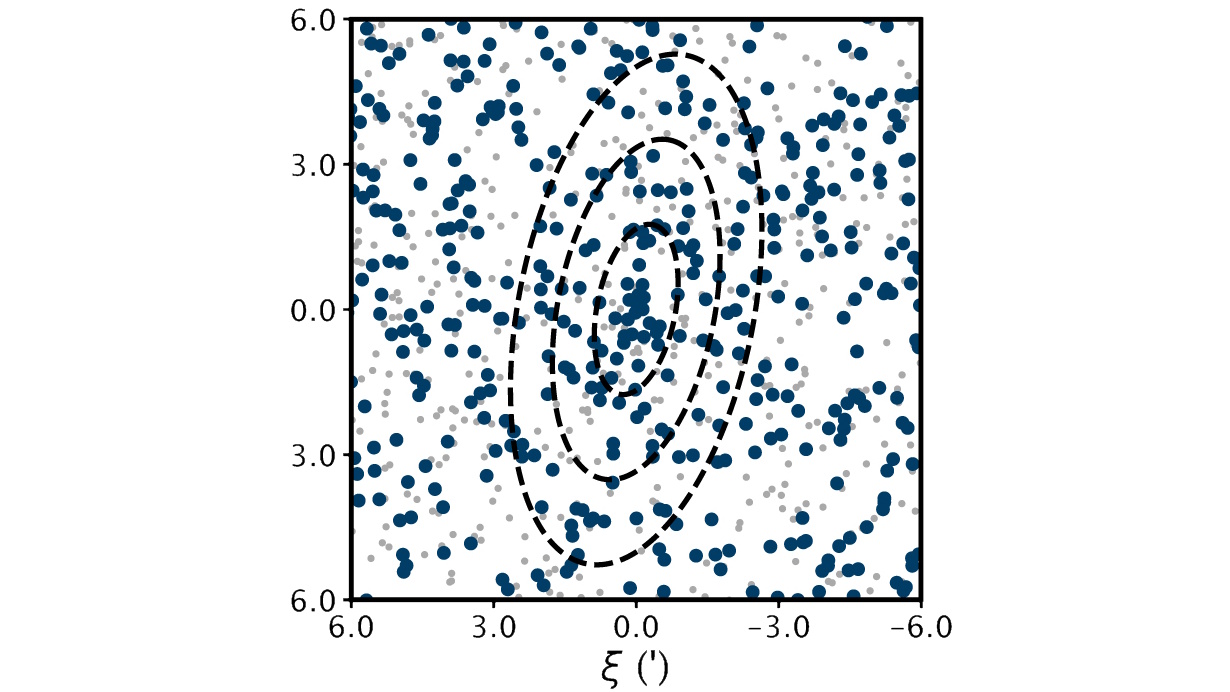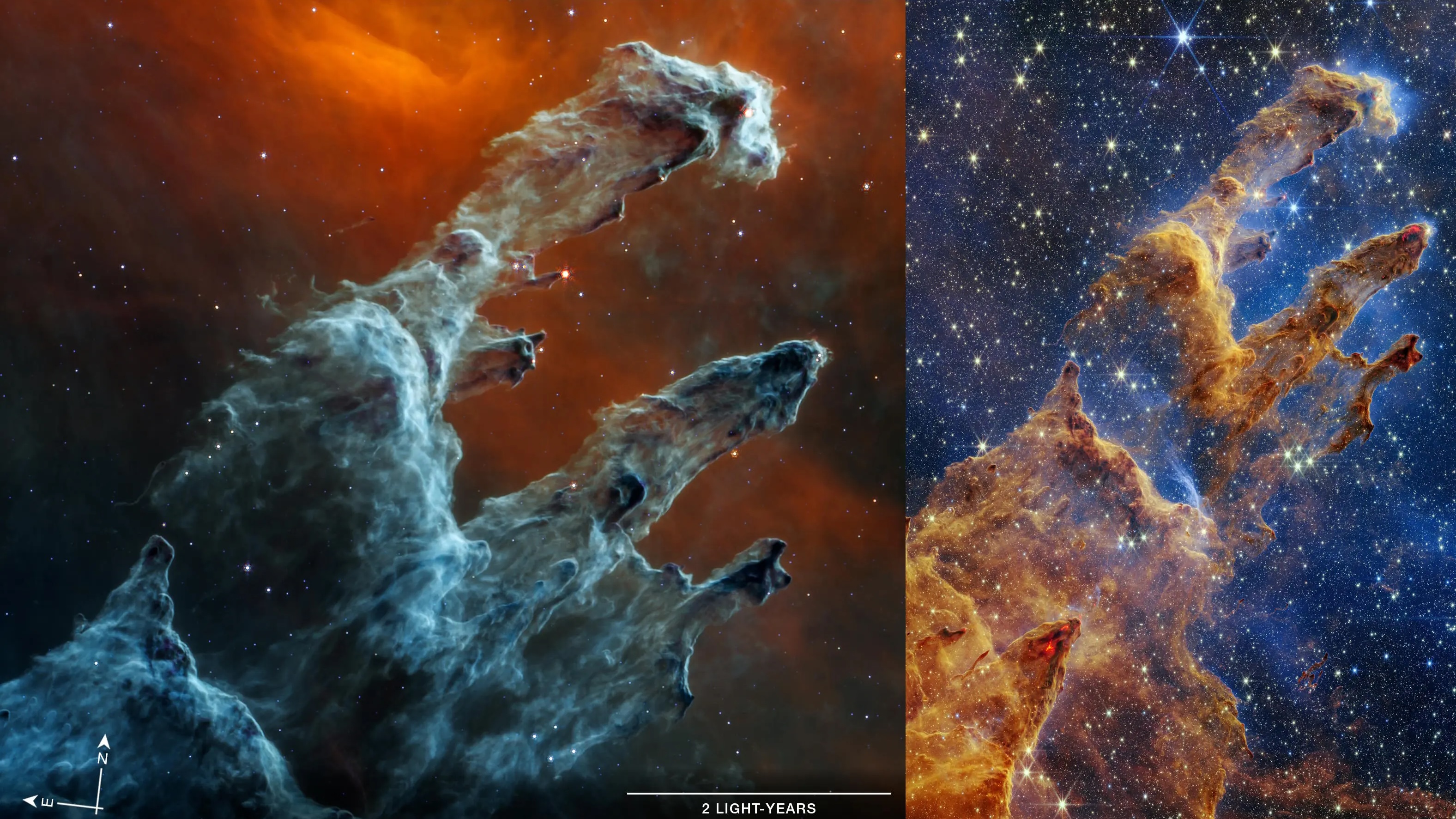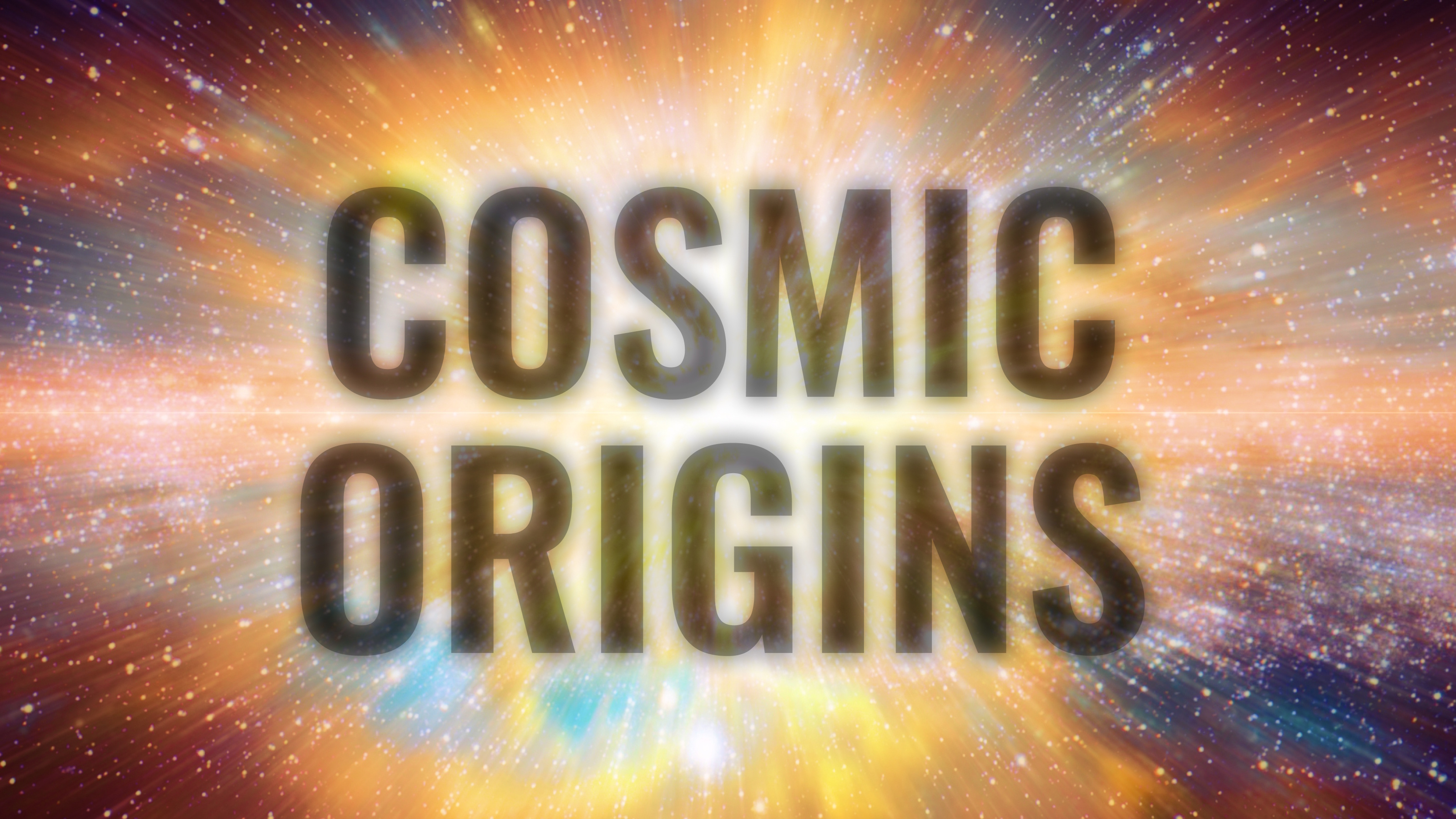Messier Monday: A Barred Spiral Eye Gazing At Us, M95
How one of the faintest galaxies in the entire Messier catalogue holds some of the greatest sights for dedicated skywatchers.
“There are so many more important things to worry about than how you’re perceived by strangers.” -Dennis Lehane
As the year progresses, so does the night sky, and objects that weren’t visible until the midnight hour just a few weeks ago are now visible hours earlier, thanks to the Earth’s motion through the Solar System. With every month that passes, in fact, deep-sky objects rise-and-set two hours earlier than they did the month prior, and that means that a new set of Messier objects are beginning to be visible in the early part of the night.
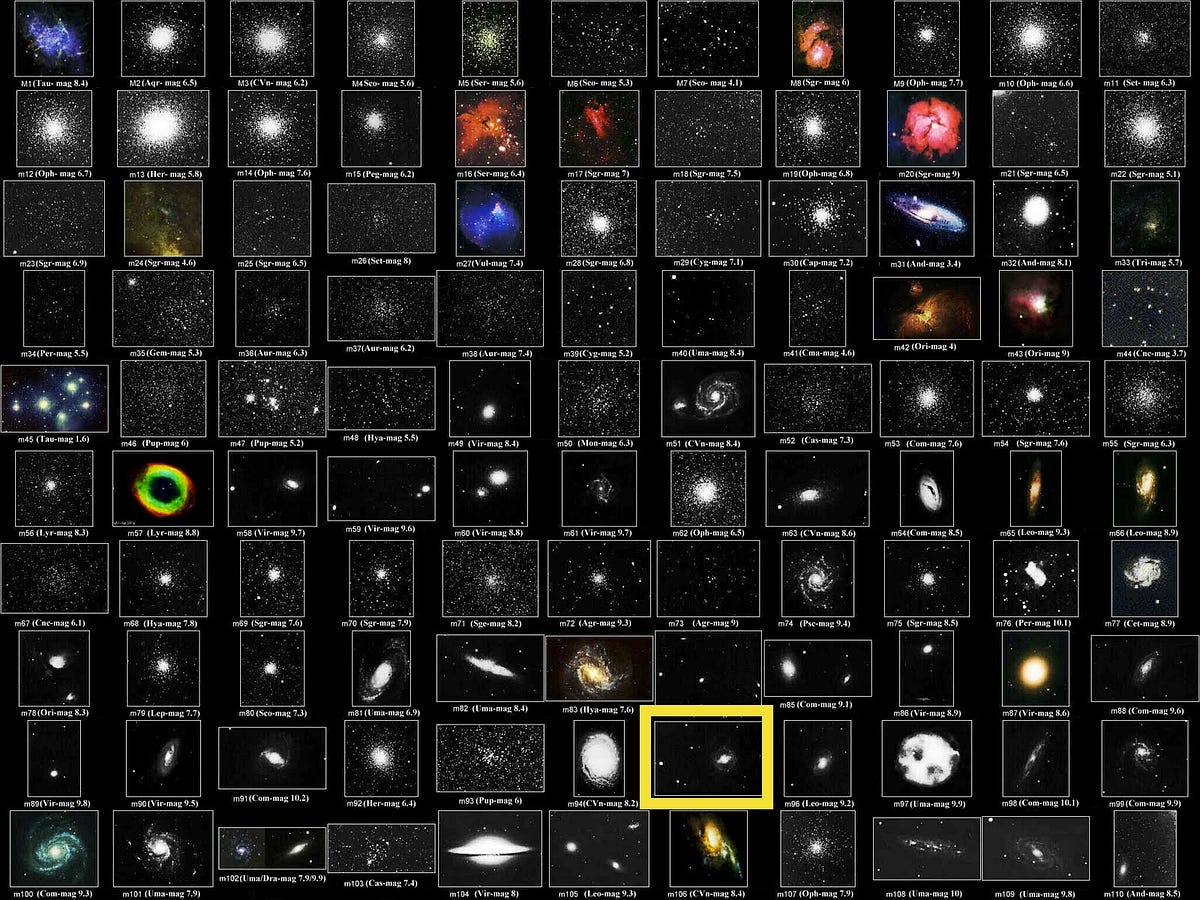
If you can get a clear eastern horizon, after sunset but prior to moonrise in the coming nights, you’re in for a treat. Because one of the most famous groups of galaxies — on the outskirts of our local supercluster — is just coming into view. This week, I’m proud to show you Messier 95, a beautiful, face-on barred spiral galaxy, perfect for the coming nights. Here’s how to find it.
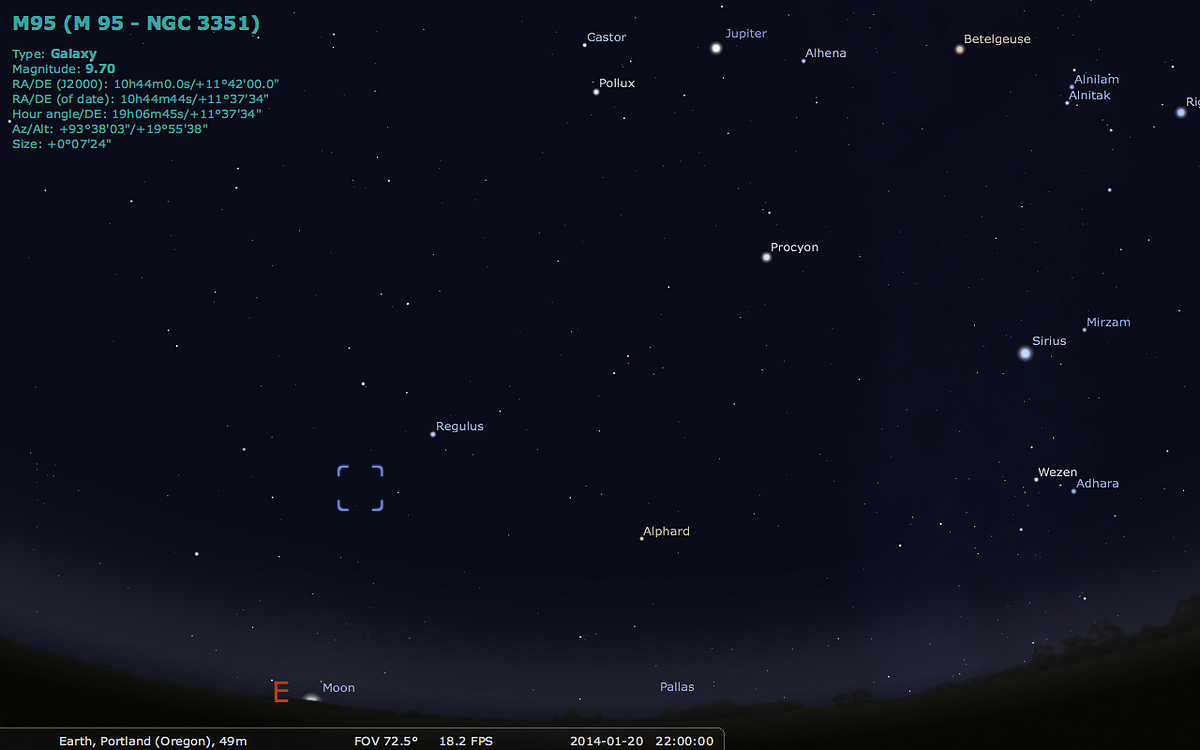
Over the eastern horizon in the first part of the night, the constellation of Leo, heralded by the bright star Regulus, will rise, trailing behind the prominent Procyon and the rest of the little dog. Regulus is the brightest star in Leo, and if you trace a path from Regulus away from Procyon (or towards the second brightest star in Leo, the more easterly Denebola), a fascinating secret awaits you.
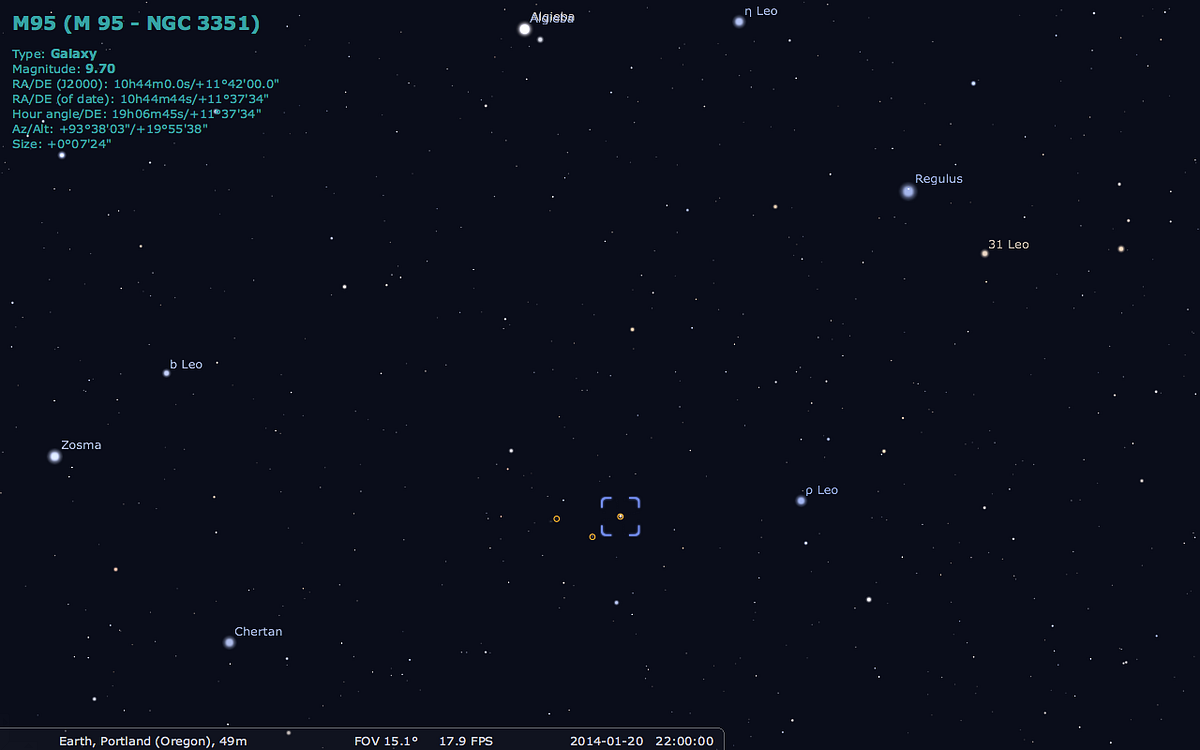
In between Regulus and Denebola (below and to the left, off-screen, above), you’ll easily notice ρ Leonis and θ Leonis (Chertan) with your naked eye. And if you look midway between those two, you’ll see two fainter naked eye stars, 52 Leonis and 53 Leonis, just above and below that imaginary line.
And finally, to find Messier 95, point your telescope (or good binoculars) in the center of it all.
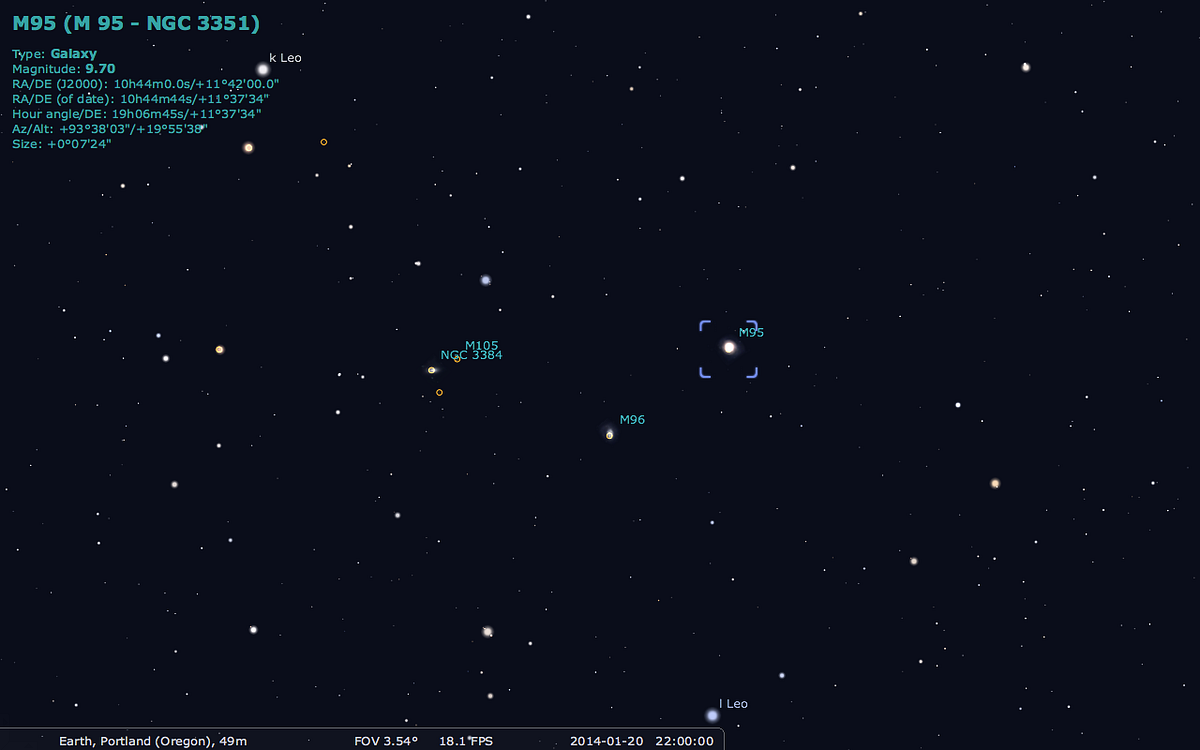
With a decent piece of equipment and pre-Moon skies, three-to-five hazy objects should be visible to you. Messier 96 may be the brightest of them, but just to its west is the even more beautiful Messier 95! Messier’s assistant Pierre Méchain discovered it in 1781, and it went into Messier’s catalogue as:
Nebula without star, in the Lion, above star l (53 Leonis): its light is very faint.
All I can say is Messier must never have seen Star Trek: Deep Space 9.
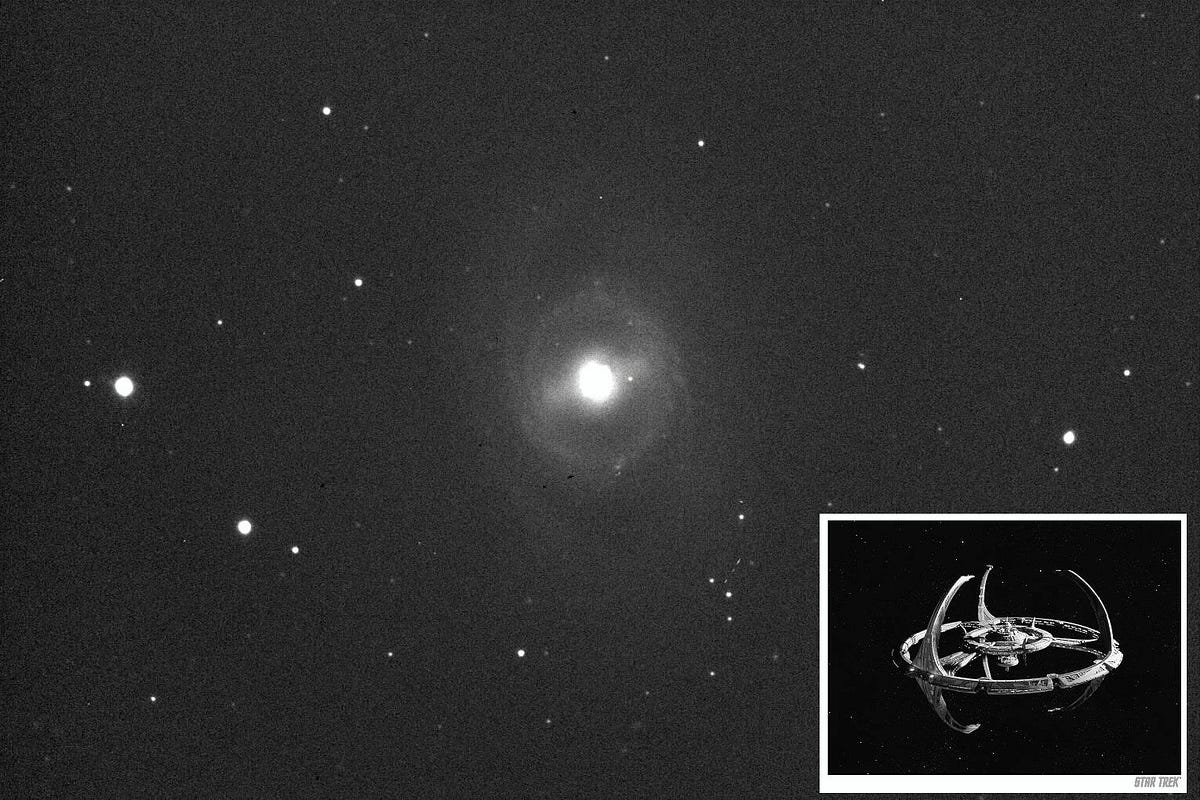
Because with the level of detail that would’ve been available to him, a bright center, a prominent bar and a circular outline around it would probably have been just barely visible. What you’re actually looking at is one of the major galaxies in the Messier 96 group, which is considerably larger than our own local group, containing at least 8 major galaxies.
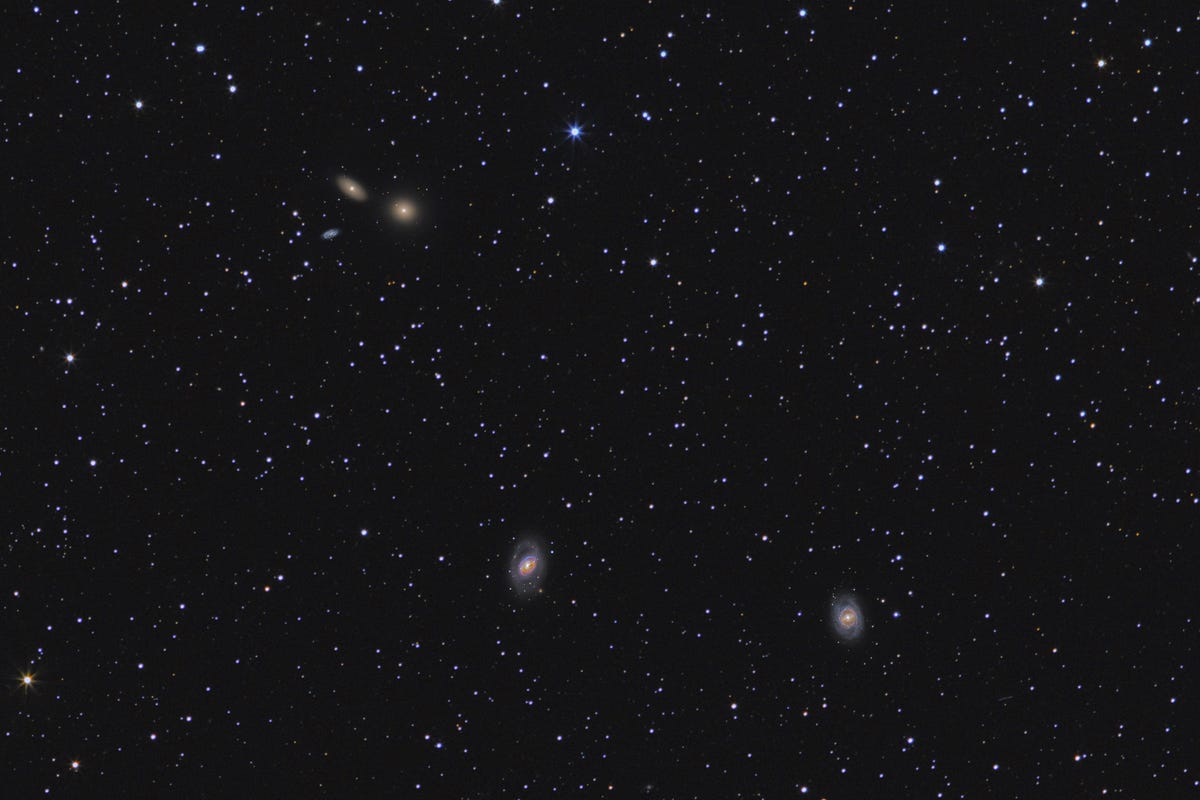
Messier 95 is, honestly, one of the lowest surface brightness objects in the entire Messier catalogue, but if you have either a large aperture telescope or a good astrophotography setup, it’s totally worth it.
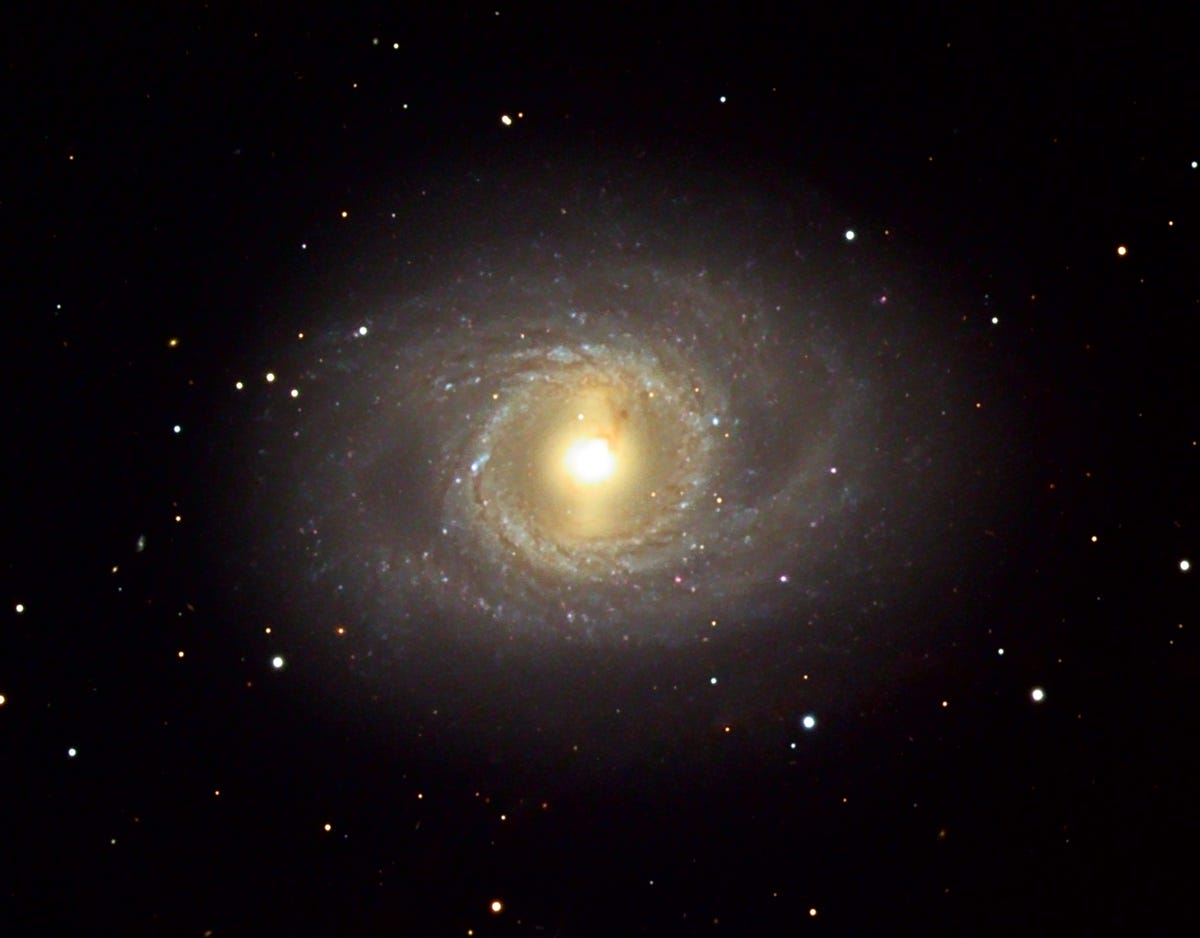
Most likely, it’s been billions of years since the last major encounter or merger for this galaxy, as there are very few signs of star formation or disruption throughout the galaxy. But the most prominent feature, by far, is the bright, central core, which measures about 2,000 light-years in diameter!
The yellow core — despite its tiny size relative to the rest of the galaxy — is where the vast majority of new stars are forming, as the Spitzer Space Telescope clearly showed by looking at this object in the infrared.
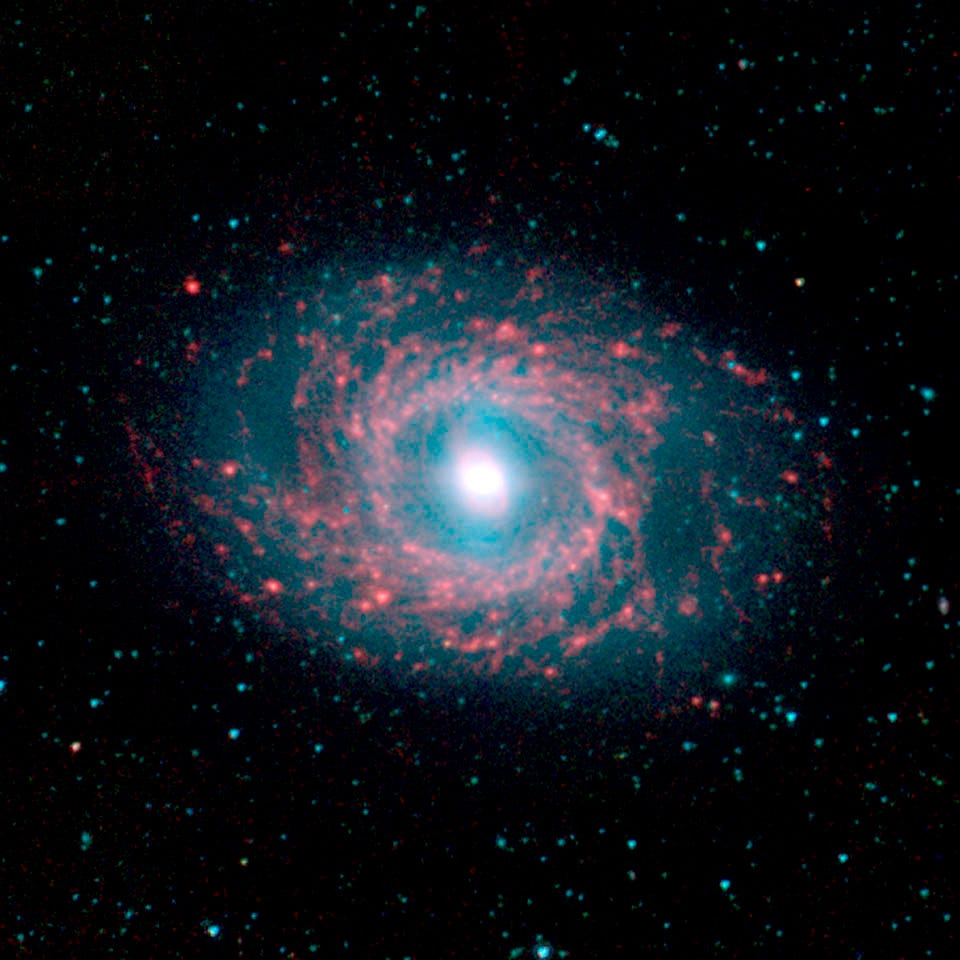
A sizable fraction of spiral galaxies — including our own Milky Way, by the way — have a prominent barred structure, where neutral gas gets funneled into the core, giving rise to new stars.
But it wasn’t the core that gave us the first-and-only supernova ever seen in this “eye-in-space”, but rather surprisingly, the outskirts, where star formation rates are very low!
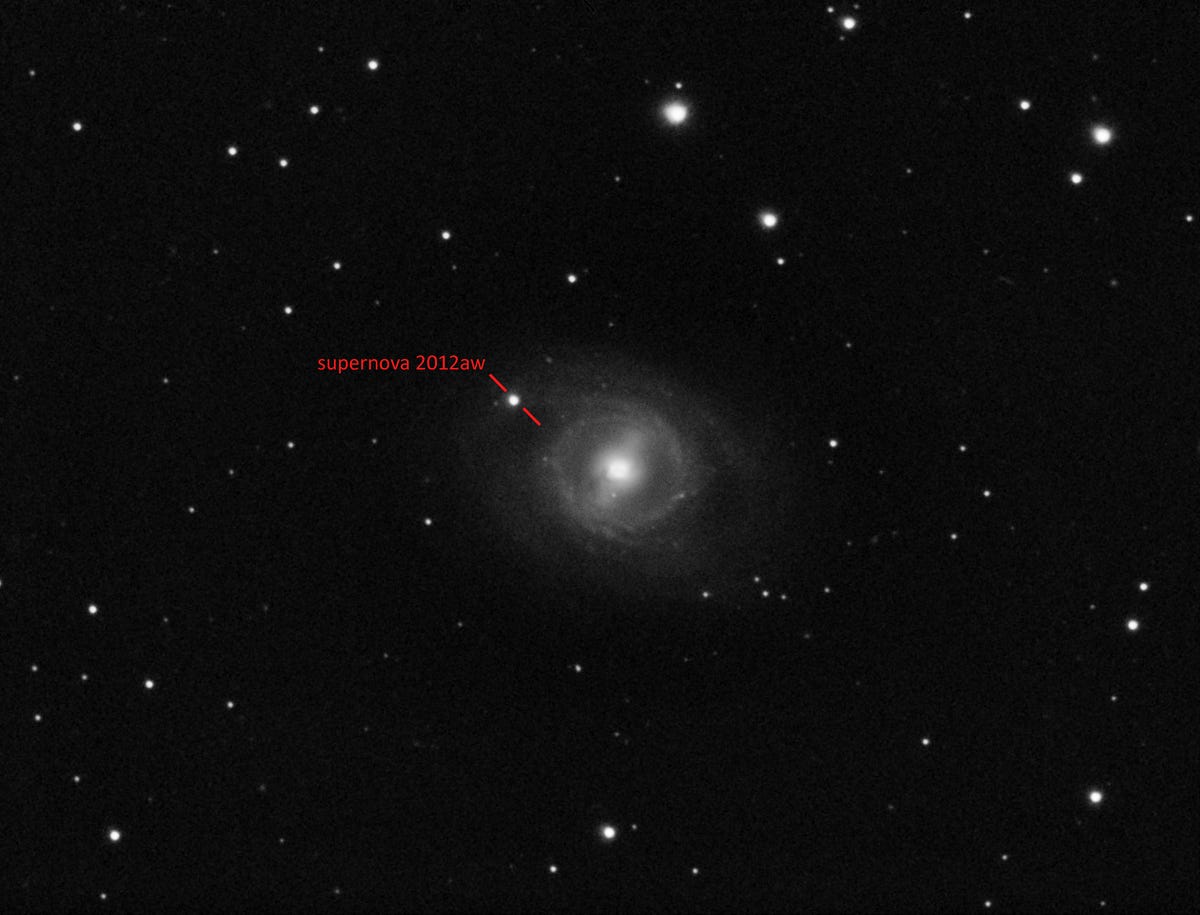
But in 2012, right when Mars was passing by, a Type II (core-collapse) supernova went off, briefly shining almost as bright as the entire galaxy!
Compared to its neighboring “big brother”, M95 might be fainter, its starts might be older, and its star forming rate may be significantly lower, but it truly has its own wonder to look at.
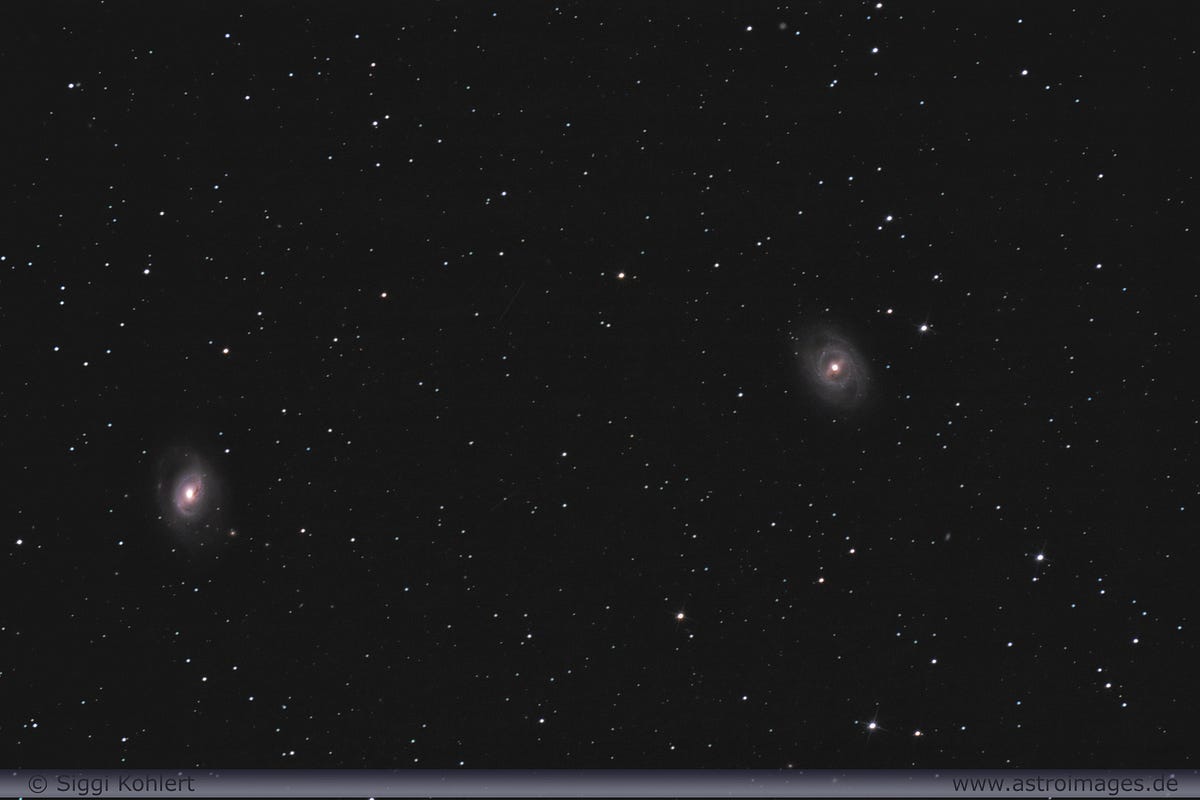
Some 33-to-38 million light-years away, this galaxy and the 7-to-23 others in the Leo I (M96) group will eventually merge together, creating a giant elliptical that will eventually dwarf “Milkdromeda,” which is what we’ll become about 4-7 billion years into the future.
In the meantime, enjoy this masterpiece created by the European Southern Observatory’s Very Large Telescope, showing the full splendor of this beta male lion. (That’s not really how galaxies behave, FYI, that’s just color.)
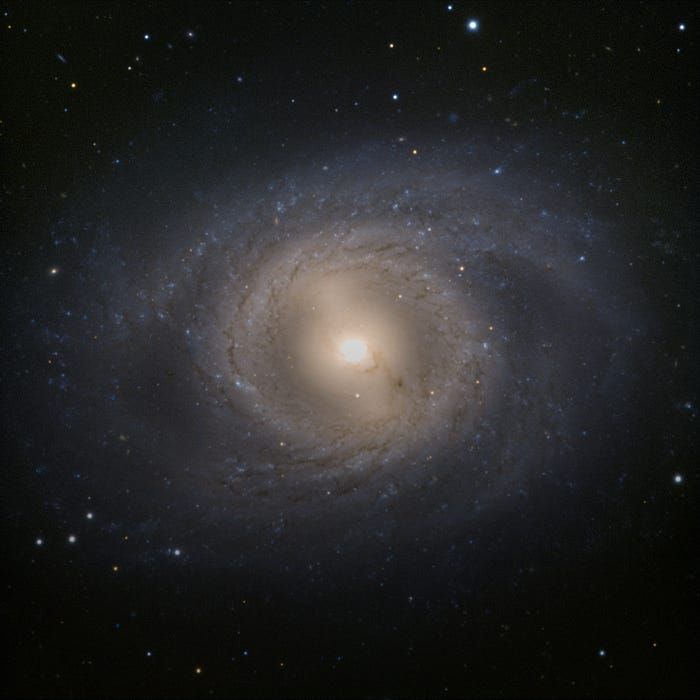
Image credit: European Southern Observatory, via http://www.eso.org/public/images/potw1212a/.
So enjoy all the wonders of the night sky when you get the clear skies to enjoy them, and come back next week for an all-new Messier Monday! If you haven’t caught them all, here are the objects we’ve covered so far:
- M1, The Crab Nebula: October 22, 2012
- M2, Messier’s First Globular Cluster: June 17, 2013
- M5, A Hyper-Smooth Globular Cluster: May 20, 2013
- M7, The Most Southerly Messier Object: July 8, 2013
- M8, The Lagoon Nebula: November 5, 2012
- M11, The Wild Duck Cluster: September 9, 2013
- M12, The Top-Heavy Gumball Globular: August 26, 2013
- M13, The Great Globular Cluster in Hercules: December 31, 2012
- M15, An Ancient Globular Cluster: November 12, 2012
- M18, A Well-Hidden, Young Star Cluster: August 5, 2013
- M20, The Youngest Star-Forming Region, The Trifid Nebula: May 6, 2013
- M21, A Baby Open Cluster in the Galactic Plane: June 24, 2013
- M25, A Dusty Open Cluster for Everyone: April 8, 2013
- M29, A Young Open Cluster in the Summer Triangle: June 3, 2013
- M30, A Straggling Globular Cluster: November 26, 2012
- M31, Andromeda, the Object that Opened Up the Universe: September 2, 2013
- M32, The Smallest Messier Galaxy: November 4, 2013
- M33, The Triangulum Galaxy: February 25, 2013
- M34, A Bright, Close Delight of the Winter Skies: October 14, 2013
- M36, A High-Flying Cluster in the Winter Skies: November 18, 2013
- M37, A Rich Open Star Cluster: December 3, 2012
- M38, A Real-Life Pi-in-the-Sky Cluster: April 29, 2013
- M39, The Closest Messier Original: November 11, 2013
- M40, Messier’s Greatest Mistake: April 1, 2013
- M41, The Dog Star’s Secret Neighbor: January 7, 2013
- M44, The Beehive Cluster / Praesepe: December 24, 2012
- M45, The Pleiades: October 29, 2012
- M46, The ‘Little Sister’ Cluster: December 23, 2013
- M47, A Big, Blue, Bright Baby Cluster: December 16, 2013
- M48, A Lost-and-Found Star Cluster: February 11, 2013
- M50, Brilliant Stars for a Winter’s Night: December 2, 2013
- M51, The Whirlpool Galaxy: April 15th, 2013
- M52, A Star Cluster on the Bubble: March 4, 2013
- M53, The Most Northern Galactic Globular: February 18, 2013
- M56, The Methuselah of Messier Objects: August 12, 2013
- M57, The Ring Nebula: July 1, 2013
- M60, The Gateway Galaxy to Virgo: February 4, 2013
- M63, The Sunflower Galaxy: January 6, 2014
- M65, The First Messier Supernova of 2013: March 25, 2013
- M67, Messier’s Oldest Open Cluster: January 14, 2013
- M71, A Very Unusual Globular Cluster: July 15, 2013
- M72, A Diffuse, Distant Globular at the End-of-the-Marathon: March 18, 2013
- M73, A Four-Star Controversy Resolved: October 21, 2013
- M74, The Phantom Galaxy at the Beginning-of-the-Marathon: March 11, 2013
- M75, The Most Concentrated Messier Globular: September 23, 2013
- M77, A Secretly Active Spiral Galaxy: October 7, 2013
- M78, A Reflection Nebula: December 10, 2012
- M79, A Cluster Beyond Our Galaxy: November 25, 2013
- M81, Bode’s Galaxy: November 19, 2012
- M82, The Cigar Galaxy: May 13, 2013
- M83, The Southern Pinwheel Galaxy, January 21, 2013
- M86, The Most Blueshifted Messier Object, June 10, 2013
- M92, The Second Greatest Globular in Hercules, April 22, 2013
- M93, Messier’s Last Original Open Cluster, January 13, 2014
- M94, A double-ringed mystery galaxy, August 19, 2013
- M95, A Barred Spiral Eye Gazing At Us, January 20, 2014
- M96, A Galactic Highlight to Ring in the New Year, December 30, 2013
- M97, The Owl Nebula, January 28, 2013
- M99, The Great Pinwheel of Virgo, July 29, 2013
- M101, The Pinwheel Galaxy, October 28, 2013
- M102, A Great Galactic Controversy: December 17, 2012
- M103, The Last ‘Original’ Object: September 16, 2013
- M104, The Sombrero Galaxy: May 27, 2013
- M106, A Spiral with an Active Black Hole: December 9, 2013
- M108, A Galactic Sliver in the Big Dipper: July 22, 2013
- M109, The Farthest Messier Spiral: September 30, 2013
Have a favorite you’d like to see? Drop me a suggestion and let me know, and I’ll see you back here next week for another deep-sky wonder, only here, and only on Messier Monday!

